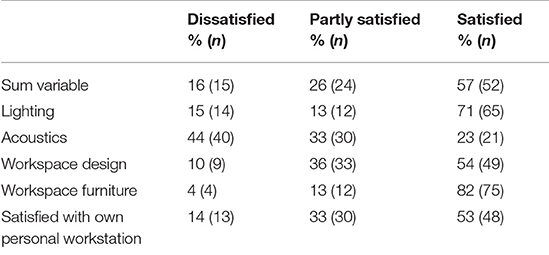Designing Tomorrow's Workplaces: 5 ways ai is influencing work environments
As technology continues to advance at an unprecedented pace, industries across the board are experiencing significant transformations. The commercial interior industry is no exception and is ready to undergo a revolution with the integration of artificial intelligence (AI) in the workplace. AI's impact on the commercial furniture industry promises to enhance productivity, optimize space utilization, and provide personalized experiences for clients and staff. Let’s explore how AI is reshaping the modern workplace.
1. Smarter Office Design
AI-powered algorithms are transforming the way office spaces are designed. By analyzing substantial amounts of data, including employee preferences, work patterns, and collaboration requirements, AI can generate optimal office layouts. These layouts are tailored to maximize efficiency, promote creativity, and foster collaboration among staff. It can also consider factors such as natural lighting, noise levels, and air quality to create healthier and more productive work environments.
2. Intelligent Space Utilization
In large office buildings, it is often challenging to determine the optimal utilization of space. AI can play a crucial role in addressing this issue. Through real-time occupancy tracking and sensor technologies, AI algorithms can monitor how different spaces are used throughout the day. This data can be used to optimize space allocation, identify underutilized areas, and make informed decisions on office expansions or reconfigurations. By minimizing wasted space, companies can reduce costs and create more flexible and adaptable work environments.
3. Personalized Employee Experiences
AI empowers businesses to provide personalized experiences for their employees. Smart furniture embedded with sensors and AI capabilities can learn individual preferences, such as preferred desk height, chair settings, and lighting conditions. It can also anticipate employee requirements, such as automatically adjusting temperature or suggesting break times based on workload and stress levels.
4. Enhanced Employee Well-being and Safety
Workplace well-being and safety are now considered critical for organizations. AI can help address these issues by monitoring environmental factors and proactively identifying potential dangers. For instance, AI-powered systems can detect and respond to air quality issues, ensuring a healthier workspace for employees. Additionally, AI can provide insights on ergonomics and posture, reminding employees to take breaks, stretch, or adjust their seating positions to prevent long-term health issues.
5. Data-Driven Decision Making
Lastly, AI generates great amounts of data that can inform decision-making processes in the commercial furniture industry. By analyzing this data, businesses can gain valuable insights into employee behavior, workspace utilization, and furniture performance. These insights can guide furniture manufacturers and designers in creating products that align with changing workplace needs, optimizing comfort, functionality, and aesthetics.
The commercial furniture industry is on the verge of a transformative journey with the integration of AI in the workplace. By leveraging AI technologies, businesses can revolutionize office design, optimize space utilization, personalize employee experiences, enhance well-being and safety, and make data-driven decisions. The future of the commercial furniture industry will be characterized by dynamic, adaptable, and intelligent workspaces that prioritize employee comfort, productivity, and satisfaction. Embracing AI in the workplace will redefine how we perceive and experience the modern workplace.



